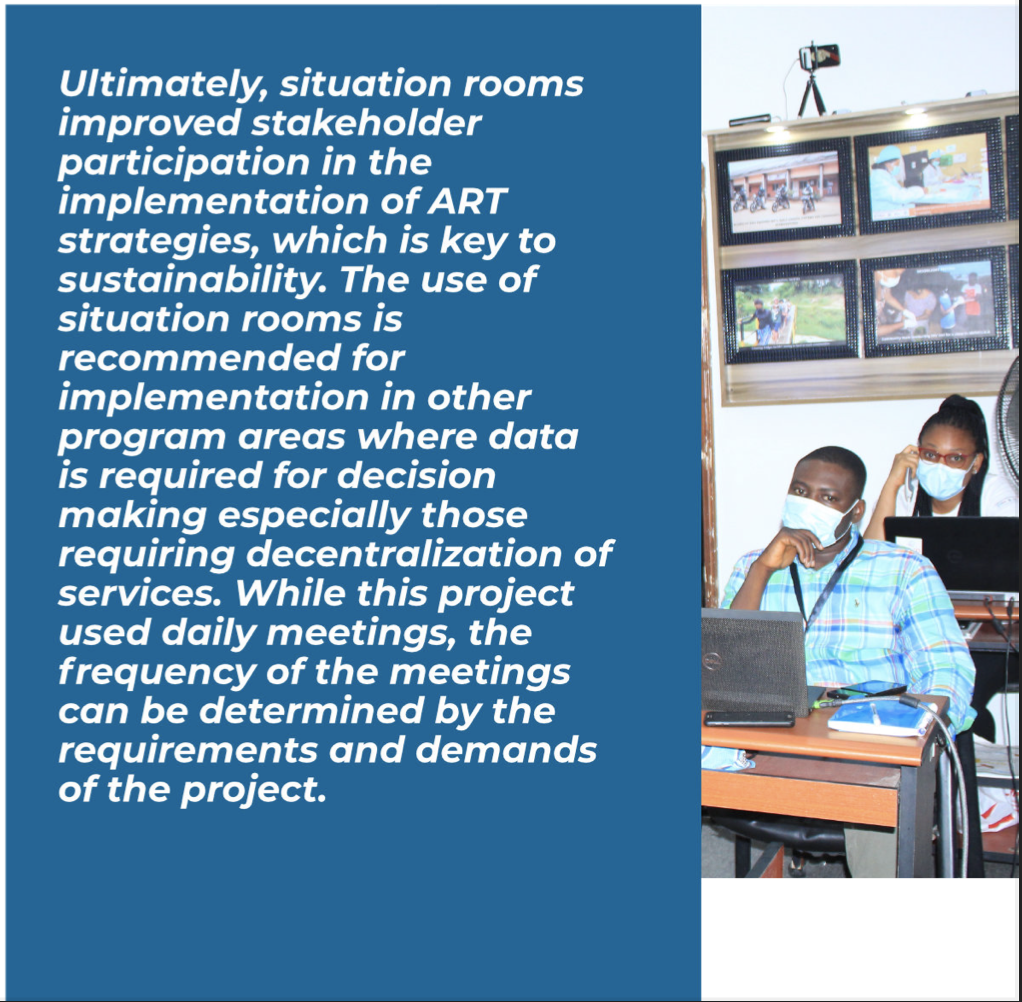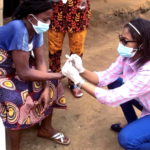SITUATION ROOM MEETINGS:
Using Data for Decision Making and Program Implementation
AN AKS EPIC ACTIVITY 2 SUCCESS STORY
The Nigeria ART Surge implemented in Akwa Ibom State from April 2019 through the USAID-funded Strengthening Integrated Delivery of HIV and AIDS Services (SIDHAS) Project and now, through Meeting Targets & Maintaining Epidemic Control (EpiC) Project in collaboration with the Akwa Ibom state government required the upscaling of high-quality HIV treatment services across different locations in the state. This necessitated the adoption of innovative strategies to meet program goals; one of such strategies being the establishment and utilization of Situation Rooms in high volume healthcare facilities to monitor program indicators and interventions to promptly address gaps and challenges as they arise. Situation Rooms, a mix of select physical or virtual spaces used in the monitoring, evaluation, and implementation of HIV programming, were established in 23 high volume healthcare facilities across 19 LGAs to support Enhanced Site Management (ESM) at the beginning of the surge. This set up was preceded by advocacy visits to relevant stakeholders to explain the concept and solicit support towards identification of additional strategic locations for creation of more situation rooms. For the physical situation rooms, it was important to have mission critical data displayed and posted in the domain including performance charts on the three UNAIDS HIV targets (case identification, client retention and viral load suppression), PEPFAR minimum requirements for facilities providing ART services, and key information on other focus areas such as adolescent-friendly services, Tuberculosis/HIV integration and Post Gender-based Violence care. These charts by providing very important situational data and analysis, aid effective identification of gaps enabling the team to devise solutions quickly. The charts are updated weekly by designated focal persons at the healthcare facility predicated on routine data review by service providers in collaboration with Implementing partners. Often, the review meetings also serve as platforms for capacity building and an avenue for dissemination of useful information. COVID-19 pandemic led to the establishment of more virtual Situation Rooms. Virtual conference communication tools like Zoom and Microsoft Teams were deployed as meeting centers for data updates and decision-making with close monitoring of the progress across outputs, outcomes, and impacts. Applications were also utilized for presentation of dashboards for data visualization, granular analysis and even capacity building. The Situation Room meetings at LGA level holds weekly across EpiC supported Health Facilities and is led by the HIV Specialists and has Technical Assistants, M&E Specialists, Team Pharmacists, Laboratory Scientists, and programme volunteers in attendance. The meeting involves different sessions in line with COVID-19 guidance for physical meetings. Similar review meetings equally hold virtually at the clusters and state level, led by the Associate Directors and State Director respectively to identify implementation and capacity gaps.
Best Practices are also shared during these sessions three times a week with thematic leads. A few challenges were encountered in the deployment of these situation rooms. While the physical situation rooms were resource-intensive, requiring additional human/material resources including suitable spaces & updating physical charts, attending the virtual situation rooms meetings consumed a lot of data and were sometimes hampered by unstable internet connectivity. At the outset, a lot of time was spent at the daily meetings and the frequent data aggregation and analysis required skills that were not evenly distributed across the teams. Levels of data to review during the meetings evolved over time through joint practice. Capacity building activities have honed team members skills over time and those drawbacks have been overcome. Now, situation room meetings are implemented efficiently, and the dividends are seen in the achievements of the team.




